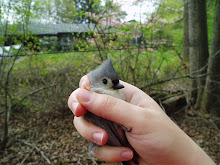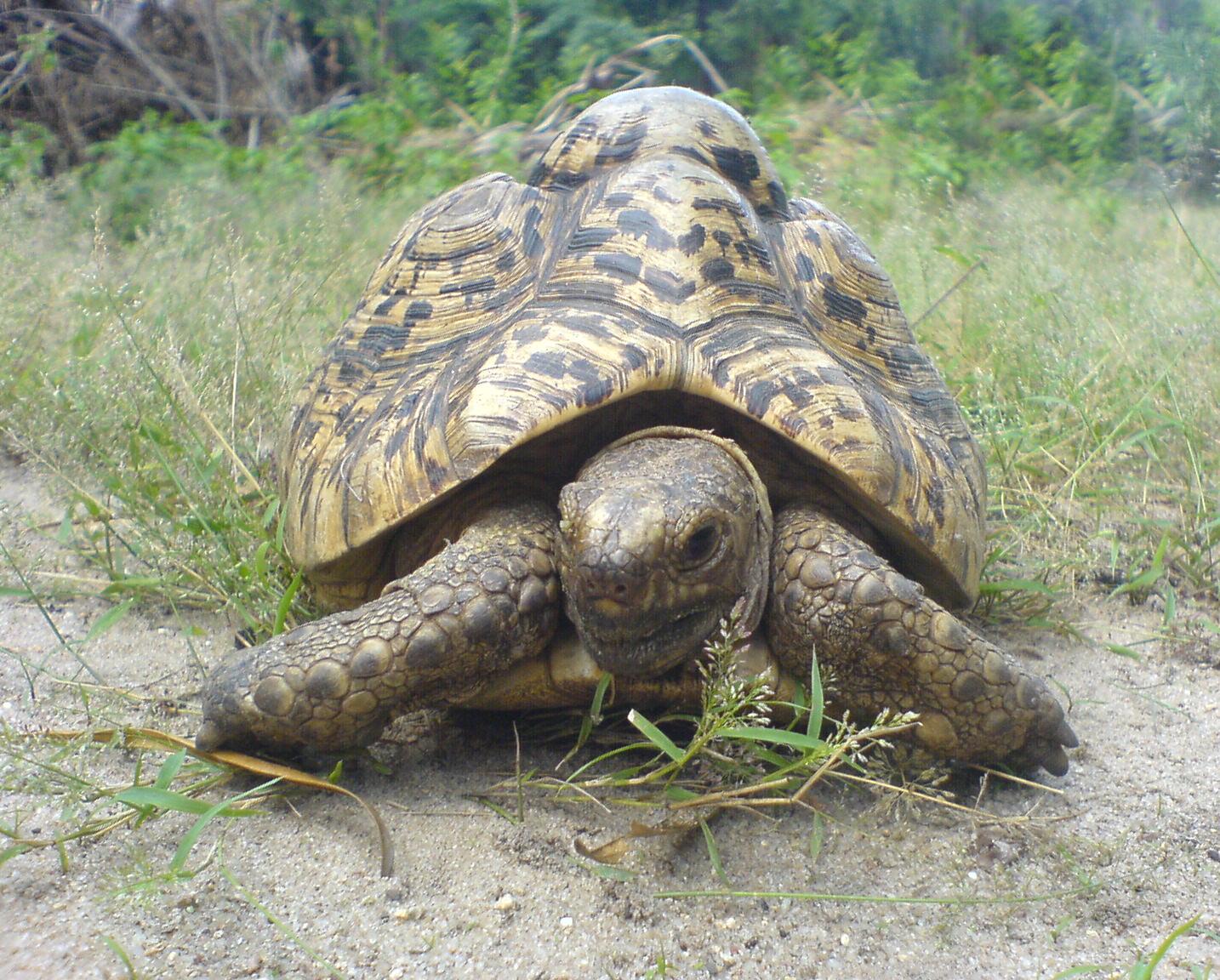Standing about in the woods on a beautiful morning left me plenty of time to think. I was thinking about races in general, and Aesop's story about a tortoise and a hare, and I wondered: what's the difference between a turtle and a tortoise or a rabbit and a hare?
First, tortoises. Tortoises are a kind of turtle; specifically, the kind that lives on land, eats plants, and can't swim. (Although they can float. Maybe.) All of the tortoises are in the family Testudinidae, in the order Testudines. As far as I can tell from Wikipedia and from Vertebrate Life (one of my favorite textbooks!), they seem to be a "good group;" that is, they are all descended from one slow ancestor. I can't seem to find anything called a tortoise that is not in Testudinidae. Which is actually not what I was expecting to find; I had been under the impression that tortoise was a catch-all term for turtles that live on land. Interesting! So, tortoises are a kind of turtle.
Hares, on the other hand, are not a kind of rabbit. Rabbits and hares, along with pikas, are all in the order Lagomorpha. Lagomorphs, in turn, are not rodents; they're the sister order to rodents, and are thus closely related, but there are significant differences between the two. Rabbits and hares are both in the family Leporidae, but the "true hares," again, as far as I can tell via Wikipedia, are all in the genus Lepus. (Which is a very large genus.) There are other lagomorphs also called hares, but they are in other genera. So... what does this mean for rabbits and hares? I'm pretty sure it would be wrong to say that all hares are rabbits, or that all rabbits are hares. Both of them are lagomorphs, and some of the common names seem to be arbitrary. (Jackrabbits are actually in Lepus, for example, making them hares despite their common name.)
This is why I like scientific names. All of the lagomorphs in Lepus are more closely related to each other than to any lagomorphs in Sylvilagus, whether you call them hares, jackrabbits, bunnies, cottontails, or Peter.
Aesop should have called it "The Testudine and the Lepus," just to clear things up a ... hare.
PS: Three interesting things to know about hares:
- Those big ears aren't just good for hearing; they help the hare radiate body heat and cool off.
- Hares give birth above ground, rather than in nests like other lagomorphs. To compensate for this, their babies are precocial, meaning that they have fur, their eyes are open, and they can run soon after birth. Most other lagomorphs are born in burrows and are altricial, that is, blind, naked, and helpless.
- Hares can hit top speeds of 45 miles per hour!






2 comments:
more fun than your last mega-troglodite story! DDY-O
this made me chuckle. Hmm, though, message from the plant world... _Thalassia testidinum_ is a marine angiosperm common in sea grass beds in the Caribbean. BUT its common name is Turtle grass....so I guess it should be Tortoise grass, huh.
ok, look out for Giant water bug questions in your mailbox within the hour.
Elena
Post a Comment